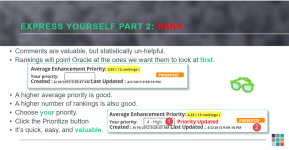JohnDanter2
VIP Member
Hi guys
If I were to get an E1 orchestration to try and call an external .NET object, what would be the process?
Is it as sinple as getting the .NET to expose something as an API to me or is there more to it than this?
Thanks
John
If I were to get an E1 orchestration to try and call an external .NET object, what would be the process?
Is it as sinple as getting the .NET to expose something as an API to me or is there more to it than this?
Thanks
John

